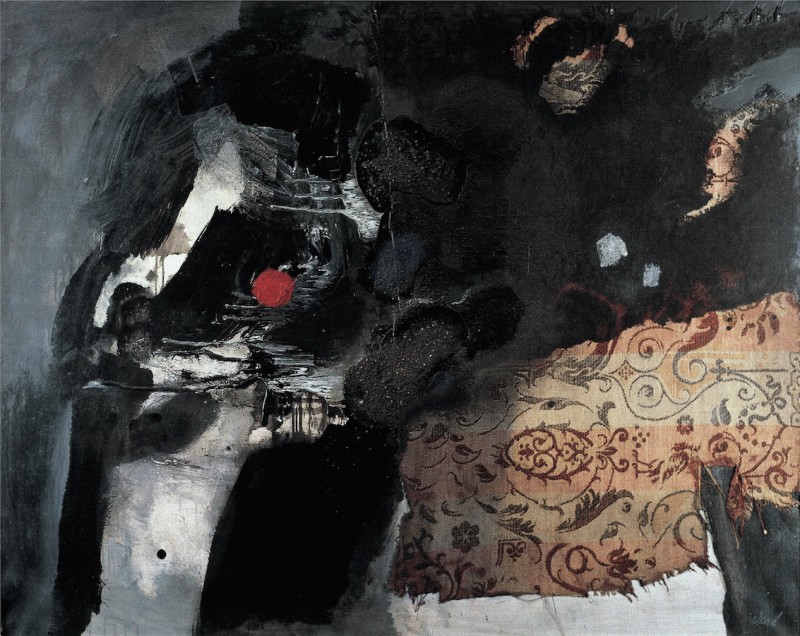La nappe
Huile et collage sur toile,1960 - (73x92 cm)
Still life as a genre can be found in both traditional Spanish painting and in European painting in general and as such endured through the 20th Century. Cubism, Surrealism, Expressionism all gave new life to this theme, jostling the viewer with alternative visions of reality. The early years of 20th Century abstraction almost annulled still-life which was less-inclined to lend itself as subject of choice to pioneers such as Kandinsky, Mondrian and Malevich, who were much more interested in the use of painting to express musical and spiritual experience rather than actual objects. After World War 2, however, in the artistic atmosphere of Montparnasse and the 2nd School of Paris in which Antoni Clavé was evolving, figuration was the rule and in this Clavé fit in perfectly.
Antoni Clavé's La Nappe, executed in 1960, is innovative in both the choice of subject and the way in which the subject is treated. Clavé had always painted still-lives and from 1958 worked on a series titled Poissons where he reduced the subject to its most essential (see Poisson 1959). Here though, the subject is nothing other than the tablecoth itself, upon which there is nothing to see ! In spite of that composition is rich with material, techniques, colours, movements and even patterns. Clavé literally frees the subject by giving it this rich assemblage and tears, cancelling space that is no longer defined by a top or a bottom. La Nappe is a essential work of the artist's oeuvre and a key to understanding the freedom and modernity that so characterise Clavé's art. It is no accident that this work so specifically left a mark on both art critics and poets.

